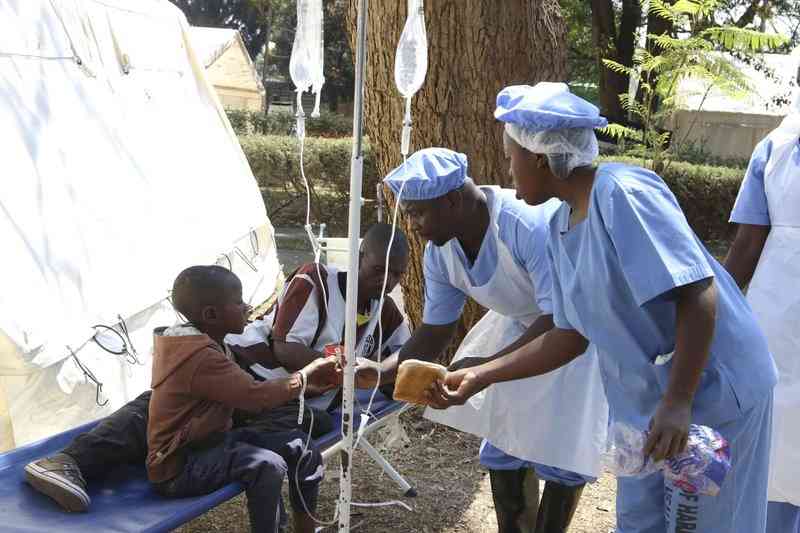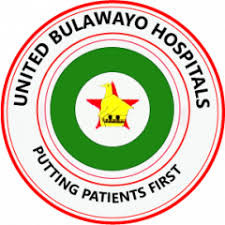
Experts have called on government to urgently declare Harare and Bulawayo’s water challenges a state of national disaster to allow urgent outside intervention to prevent a health crisis following the recent deadly cholera outbreak.
Authorities declared the end of the cholera outbreak in July this year, but health experts say the conditions which caused the waterborne disease still exist and need urgent attention.
When government declared the end of the cholera outbreak, the country had recorded 34 549 suspected cases and more than 700 deaths since the outbreak was reported in February 2023 in Chegutu, Mashonaland West province, before it spread to other cities.
On Tuesday, the ongoing water crisis in Bulawayo and Harare spilled to Parliament where Zanu PF Proportional Representation lawmaker Rita Ndlovu raised fears of another cholera outbreak.
She called on the Local Government ministry to urgently overhaul the water reticulation system in Bulawayo, Harare and other towns.
“The Bulawayo challenges and the current situation and state of disaster just like the drought situation year in and year out, pleading for water situations to be declared a state of disaster, has fallen on deaf ears,” Ndlovu said.
“Declaration of state of disaster will attract the necessary private sector and international assistance in funding.
“Prioritise allocation of foreign currency and budgetary funding to local authorities and Zinwa [Zimbabwe National Water Authority] for water-related activities like bulk water provision, particularly Gwayi-Shangani Dam.”
- Mr President, what message do you have for diasporan Zimbos at UNGA?
- Don't muzzle Gukurahundi survivors: UN
- UN has exposed ED deception
- Businessman piles pressure on top judge
Keep Reading
Bulawayo has six supply dams and the local authority has since decommissioned Mzingwane Dam, with Upper Ncema set to be switched off before the end of this month because of dwindling water levels.
Water levels are also fast dwindling at other supply dams, according to the local authority.
In Harare, foreign currency shortages to purchase water treatment chemicals is piling more woes on an already dire situation where residents are going for at least two weeks without running water.
Ndlovu urged the government to purchase water treatment chemicals and fund the rehabilitation of the entire infrastructure including dams.
Harare Residents Trust co-ordinator Precious Shumba said government needed to prioritise water, sanitation and hygiene programmes to boost water availability.
“As a priority, the government needs to invest more in upgrading the underground sewage and water pipes so that the bulk of the treated water reaches the intended households,” Shumba told NewsDay.
Combined Harare Residents Association chairperson Reuben Akili said government should urgently act to ensure clean water for millions of people.
Medical and Dental Private Practitioners Association of Zimbabwe president Johannes Marisa said fears of a cholera outbreak could not be ignored.
“The scarcity of water as a precious resource is actually detrimental to everyone’s health,” he said.
Community Working Group on Health director Itai Rusike echoed similar concerns.
“The implications have been telling in the old age diseases that have resurfaced: cholera, typhoid, diarrhoea, skin diseases and pneumonia, among other preventable health challenges,” Rusike said.
“Other challenges have been reported of women facing abuse when they have to use the bush at night or have sex in return for water.”
Last year’s outbreak of cholera is one of many others since 2008 when Zimbabwe experienced the most devastating cholera outbreak in Africa.
The outbreak killed at least 4 000 people and infected at least 100 000.
In Harare, the water challenges are mainly blamed on obsolete infrastructure, a ballooning population, severe droughts and pervasive government corruption and mismanagement.
Poor governance and disputes between central government and Harare City Council have hindered efforts to address the problems.
The infrastructure for piped water in Harare was developed in the 1950s and designed for a population of around 300 000 people.
Currently, Harare’s greater metropolitan area has about 4,5 million people.
In Bulawayo, the Gwayi-Shangani Dam project, which involves piping water from the Zambezi River to the country’s second largest city, is seen as the long-lasting solution.
It was mooted in 1912, but failed to take off under the Rhodesian administration
In the run-up to the 2023 harmonised elections, President Emmerson Mnangagwa promised to complete construction of the dam before the elections.
The promise was not fulfilled.
The government had initially said the dam would completed in December 2022, before pushing the headline to 2023 and now December this year.
Justice minister Ziyambi Ziyambi said the water crisis did not constitute an emergency.
“We have refrained from declaring a disaster where we feel there is mismanagement by our local authorities. The majority of our local authorities, including Harare, even have their billing systems in shambles,” Ziyambi said in his response in Parliament.
“If there are local authorities that should not be broke, they are Harare and Bulawayo, but for the past 20 or so years, they have failed in their roles as city leaders.”










